Massimo Camplani
Calorie Counter: RGB-Depth Visual Estimation of Energy Expenditure at Home
Jul 27, 2016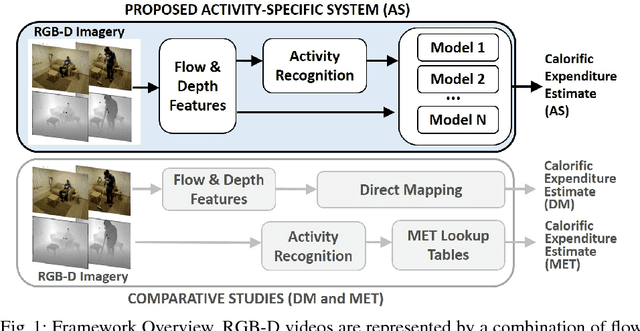

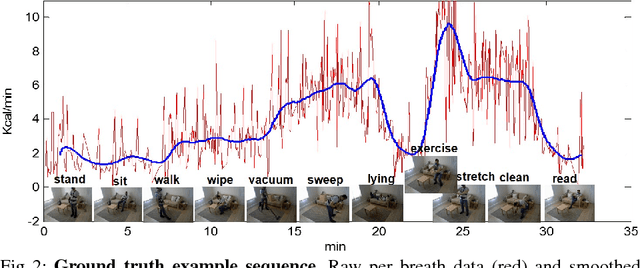

Abstract:We present a new framework for vision-based estimation of calorific expenditure from RGB-D data - the first that is validated on physical gas exchange measurements and applied to daily living scenarios. Deriving a person's energy expenditure from sensors is an important tool in tracking physical activity levels for health and lifestyle monitoring. Most existing methods use metabolic lookup tables (METs) for a manual estimate or systems with inertial sensors which ultimately require users to wear devices. In contrast, the proposed pose-invariant and individual-independent vision framework allows for a remote estimation of calorific expenditure. We introduce, and evaluate our approach on, a new dataset called SPHERE-calorie, for which visual estimates can be compared against simultaneously obtained, indirect calorimetry measures based on gas exchange. % based on per breath gas exchange. We conclude from our experiments that the proposed vision pipeline is suitable for home monitoring in a controlled environment, with calorific expenditure estimates above accuracy levels of commonly used manual estimations via METs. With the dataset released, our work establishes a baseline for future research for this little-explored area of computer vision.
Multiple Human Tracking in RGB-D Data: A Survey
Jun 14, 2016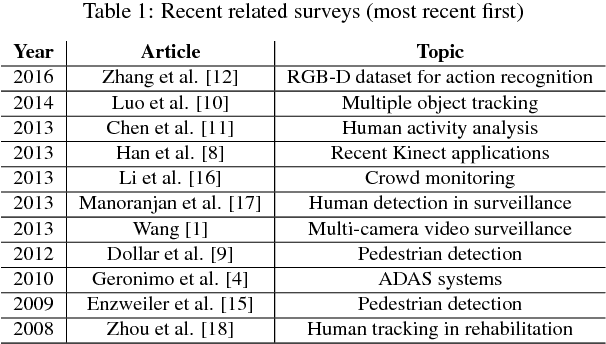

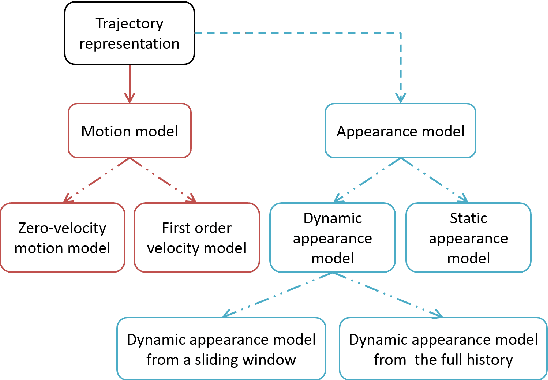
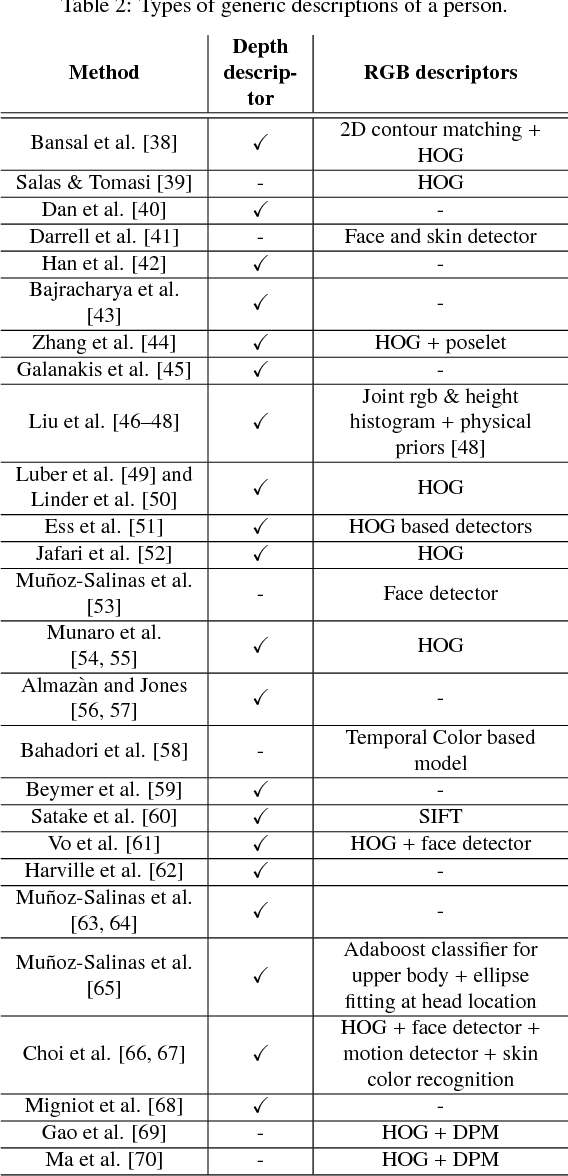
Abstract:Multiple human tracking (MHT) is a fundamental task in many computer vision applications. Appearance-based approaches, primarily formulated on RGB data, are constrained and affected by problems arising from occlusions and/or illumination variations. In recent years, the arrival of cheap RGB-Depth (RGB-D) devices has {led} to many new approaches to MHT, and many of these integrate color and depth cues to improve each and every stage of the process. In this survey, we present the common processing pipeline of these methods and review their methodology based (a) on how they implement this pipeline and (b) on what role depth plays within each stage of it. We identify and introduce existing, publicly available, benchmark datasets and software resources that fuse color and depth data for MHT. Finally, we present a brief comparative evaluation of the performance of those works that have applied their methods to these datasets.
 Add to Chrome
Add to Chrome Add to Firefox
Add to Firefox Add to Edge
Add to Edge